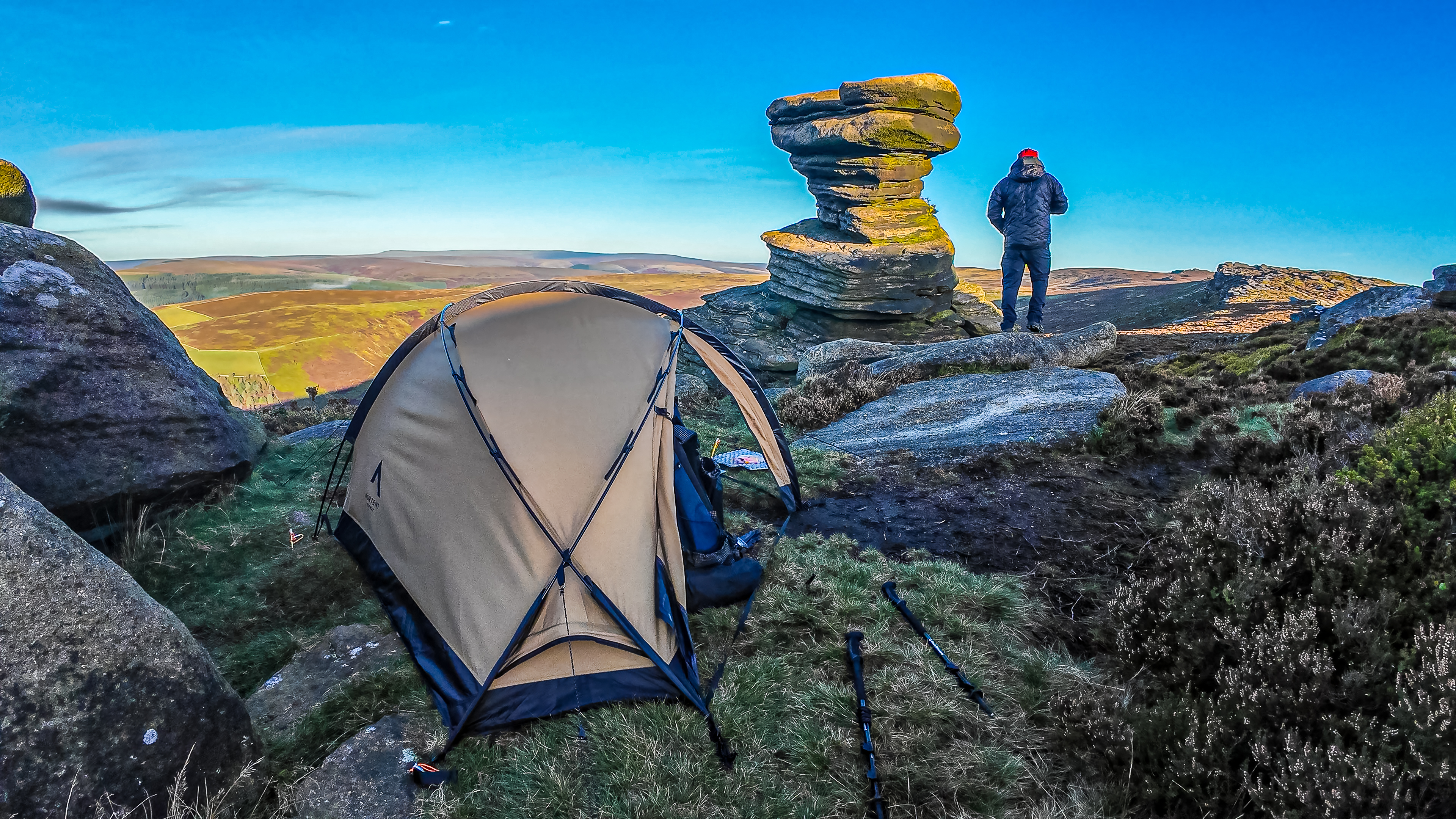Polycotton- En magisk tryllestav?
Selv om bomullsduker og telt er pustende, kan kondens fremdeles oppstå, spesielt i fuktige og kalde omgivelser med lite luftbevegelse. Dette skyldes en kombinasjon av faktorer som luftsirkulasjon, temperaturforskjeller og luftfuktighet:
Luftsirkulasjon:
Telt er vanligvis utstyrt med ventiler for å tillate luftsirkulasjon. Dette bidrar til å fjerne fuktig luft fra innsiden av teltet og bringer inn kjøligere, frisk luft fra utsiden. Imidlertid, når den varmere og fuktige luften møter kjøligere overflater, som teltstoffet om natten, kan det føre til kondens. Luftsirkulasjon og pustende stoffer hjelper til med å begrense, men ikke alltid eliminere dette problemet. Likevel reduserer bomullstelt kondens betydelig.
Temperaturforskjell:
Nattetemperaturer kan være betydelig lavere enn dagstemperaturer, spesielt i fjellområder eller under kalde værforhold. Denne temperaturforskjellen kan føre til at fuktigheten inne i teltet kondenserer på innsiden av teltstoffet. Dette gjelder spesielt i fuktige omgivelser, for eksempel nær vann eller myrer. Igjen hjelper pustende stoffer til med å redusere kondens.
Luftsirkulasjon:
Hvis teltet er plassert i et skjermet eller stille miljø, kan det ha mindre luftsirkulasjon, noe som øker sjansene for kondens. Stillestående luft gjør det vanskeligere å fjerne opphopet fuktighet inne i teltet. Dette fysiske prinsippet gjelder for alle materialer, enten de er pustende eller ikke.

Det vil være situasjoner der kondens oppstår, spesielt i miljøer der luften er stillestående (noe som resulterer i dårlig luftsirkulasjon), fuktig og kald. I slike tilfeller er kondens uunngåelig, drevet av fysiske prinsipper som det er umulig å unngå. Dette gjelder enten du er i et telt med pustende egenskaper eller et telt uten. De samme fysiske prinsippene gjelder for eksempel også i en kald hytte med utilstrekkelig luftsirkulasjon. Der man vil oppleve fuktige vegger inne i hytten, med mindre du lufter ut eller gir noe form for oppvarming.
Pustende polycotton hjelper betydelig til med å redusere kondens. Men det er ingen magisk løsning som kan bøye de fysiske lovene. Sluttbrukere kan likevel bidra til å unngå kondens ytterligere ved å velge egnede overnattingsplasser. Å sette opp teltet nær vann, i områder med stagnert luftstrøm og lave temperaturer, vil føre til kondens, da dette er bundet til de nevnte fysiske prinsippene. Så, kondens er alltid et samspill mellom teltets design, teltstoffet, klimaet, omgivelsene og kunnskapen til sluttbrukeren.















